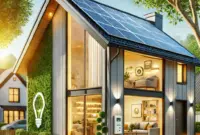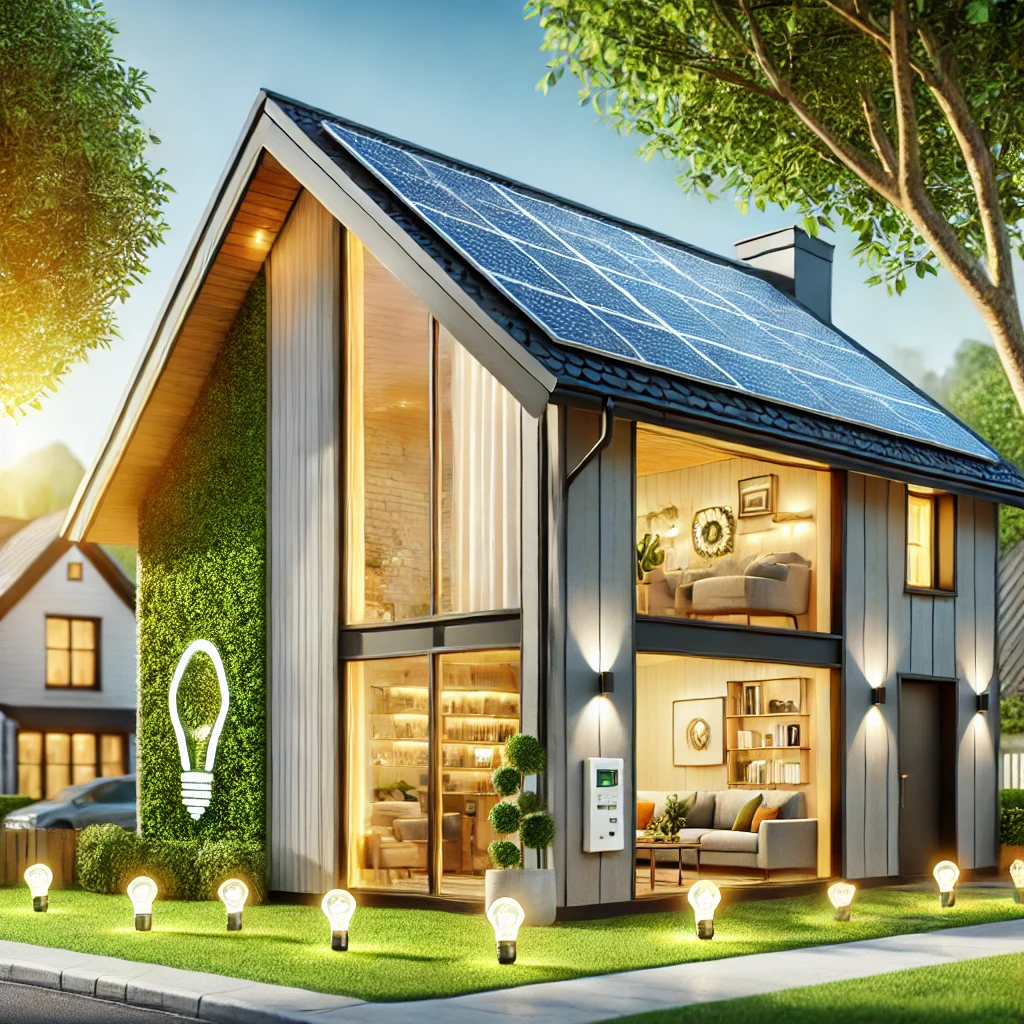
Hey there!
Ever feel like your energy bills are running away faster than your morning coffee cools down? We’ve all been there! But the good news is, making your home more energy-efficient doesn’t have to be complicated or boring. In fact, with just a few easy changes, you can save some serious cash and do your part for the environment. Plus, your home will feel cozier and more comfortable — it’s a win-win!
So, whether you’re just starting out on your energy-saving journey or looking to up your eco-game, here’s a guide packed with tips and tricks to help you make your home a true energy-efficient haven.
1. Upgrade Your Lighting: Switch to LEDs
One of the easiest ways to start your energy-saving adventure is by changing your light bulbs. Yep, you heard that right! Switching out your old incandescent bulbs for energy-efficient LED bulbs can make a world of difference. LED lights use 75% less energy and last 25 times longer than traditional bulbs. That means fewer trips to the store and more money staying in your pocket.
And don’t worry, LED lights aren’t those cold, dim lights from years ago. Nowadays, they come in all sorts of warm tones, dimmable options, and even smart versions that you can control with your phone!
2. Seal Those Gaps: Get Rid of Drafts
Does your home feel a little drafty? That could be costing you big time. Drafts from windows and doors allow precious warm or cool air to escape, making your heating and cooling systems work harder. To fix this, try weatherstripping or caulking around windows and doors. You can also get a draft stopper (those little cushion things that sit at the base of your door) to keep the air in.
This small fix can reduce your energy consumption by up to 30%, and it’s one of the cheapest ways to make your home more energy-efficient. Say goodbye to sneaky drafts and hello to lower bills!
3. Invest in a Programmable Thermostat
Remember those times when you left the heat or AC blasting all day while you were out of the house? With a programmable thermostat, those days are over! These little gadgets let you set specific temperatures for different times of the day, so your heating and cooling system only runs when you need it.
Even better, you can get smart thermostats like Google Nest or Ecobee, which learn your schedule and adjust automatically. This not only saves energy but also ensures your home is always at the perfect temperature when you walk through the door. You could see savings of 10-12% on heating and 15% on cooling costs!
4. Energy-Efficient Windows: Let the Sunshine In (But Not the Heat)
If you live in an area with extreme temperatures, investing in energy-efficient windows could be one of the best home improvements you make. Energy-efficient windows have special coatings that block out UV rays while still letting natural light in, which keeps your home warmer in the winter and cooler in the summer.
If new windows are a bit too pricey, window film or insulated curtains can also help. These options reduce heat loss in the winter and block out heat during the summer, cutting down your energy costs without breaking the bank.
5. Get Smart with Your Appliances
Your appliances — from your fridge to your washing machine — account for a huge chunk of your home’s energy use. If you’re looking to make a serious dent in your energy consumption, consider upgrading to Energy Star certified appliances. These devices use 10-50% less energy than their non-certified counterparts, which means you’ll start seeing savings immediately.
Not ready to replace your appliances just yet? No worries! You can still save energy by using them smarter. For example:
- Only run your dishwasher when it’s full.
- Use cold water in your washing machine.
- Clean the lint trap in your dryer after every use to improve efficiency.
Small tweaks like these can make a big difference in your energy use.
6. Insulate Like a Pro
Proper insulation is like a big cozy blanket for your home. It helps regulate the temperature by keeping the warm air inside during winter and blocking out the heat in summer. Homes with poor insulation tend to lose heat through walls, floors, and the roof, which can significantly drive up energy costs.
If you’re in an older home, check your insulation levels, especially in the attic, basement, and crawl spaces. Adding or upgrading insulation can save you anywhere from 10-50% on your energy bills. And let’s be real — no one likes an overly chilly room in the middle of January!
7. Install Solar Panels: Go Green & Save Green
Want to go the extra mile? Solar panels can be a game-changer when it comes to energy efficiency. While the upfront cost might seem hefty, the long-term savings are substantial. Plus, depending on where you live, you might qualify for tax credits or incentives that can offset some of the initial costs.
Once installed, solar panels can significantly reduce or even eliminate your energy bills, and they’re one of the most eco-friendly options out there. Talk about a win for both your wallet and the planet!
8. Use Energy-Efficient Landscaping
You read that right! Your landscaping can actually help make your home more energy-efficient. Planting trees or shrubs around your home can provide shade during hot summer months, reducing the need for air conditioning. In the winter, those same plants can act as windbreaks, keeping cold air from chilling your home.
Also, consider drought-resistant plants that require less water, which can cut down on your water bill. A well-planned garden isn’t just pretty — it’s functional, too!
9. Unplug Devices: Stop Wasting Energy in Standby Mode
Here’s a secret most people don’t know: even when they’re turned off, your electronic devices like TVs, gaming consoles, and computers still use energy if they’re plugged in. This is known as phantom energy or vampire power (spooky, right?). To stop these sneaky energy drainers, make it a habit to unplug devices when they’re not in use.
Better yet, invest in power strips with an on/off switch so you can easily cut the power to multiple devices at once.
10. Maintain Your HVAC System
Your HVAC (Heating, Ventilation, and Air Conditioning) system is one of the biggest energy users in your home, especially if it’s not running efficiently. Make sure to replace your air filters regularly (every 1-3 months is a good rule of thumb) to keep the system running smoothly. Dirty filters make your system work harder, using more energy and costing you more money.
Also, schedule regular maintenance checks to ensure everything is in tip-top shape. It might cost a little upfront, but it can prevent bigger (and pricier) problems down the line.
Final Thoughts
Making your home more energy-efficient doesn’t have to be overwhelming. By following these simple tips, you can save money, reduce your carbon footprint, and make your home a more comfortable place to live. Plus, the planet will thank you!
Start small by swapping out light bulbs or sealing drafts, and work your way up to bigger projects like installing solar panels or upgrading your appliances. Every step you take makes a difference.
So, are you ready to transform your home into an energy-efficient haven? Let’s get started!

